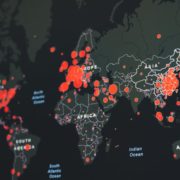AFTER a World Health Organization report said that the Philippines recorded the fastest rise in coronavirus infections in the Western Pacific region over a two-week period, Malacañang has been on the defensive to disprove the findings.
Data from the WHO showed that between June 16 and June 27, the country registered 8,143 infections — the highest among 22 countries in the region.
“The WHO said that we have the fastest rise cases in the whole Western Pacific region. Is this true? We beg to disagree,” Presidential Spokesperson Harry Roque said in Filipino on Monday, June 29.
The findings were followed by Singapore with 2,351 new cases, and China with 302 during the same period.
“Of course, if you look at the rise in cases, it should be in relation to your population. Why are we being compared to Singapore when it only has 5 million people? That’s just one city, not even as big as Quezon City or Manila,” noted Roque.
According to the spokesman, the Philippines is actually 6th in the list of countries across Asia with the highest number of COVID-19 cases.
“If you divide the cases per million population, this is what you get: the highest in the Western Pacific [is] India [with] 549,197, followed by Pakistan [at] 202,955. Bangladesh [has] 137,787, Indonesia [has] 54,010, [then] Singapore [with] 43,459, and then the Philippines at 35,455,” he said.
“It is clear that data do not lie. We are not the country with the fastest increase in the number of cases in the Western Pacific region. We will let the data respond to the report of WHO,” Roque added.
However, India, Bangladesh and Indonesia are part of the WHO South-East Asian region while Pakistan forms part of the WHO Eastern Mediterranean region.
Roque defended the Palace’s data, saying: “Well I’m not going to go nitpicking into this, but as far as I know, India, Pakistan, and Bangladesh are still Asian countries. If you look at the WHO, I think—we checked this and in the data of the WHO, they are classified as Western Pacific countries.”
He also stressed that President Rodrigo Duterte did his best in addressing the COVID-19 situation in the country.
“Did the government make the right move? Our answer is yes. We are not perfect. Perhaps we could have done better. But we are already here and one thing I can assure you, the President did the very best that he can and we are in control of the situation,” the spokesman said.
“You know, the president only has one message – stop politics during COVID-19. But criticisms continue to be hurled at us and we have to respond to them. They said there are shortcomings. We asked them what they are… but they did not give any,” Roque added.
Meanwhile, the Department of Health responded to WHO’s report by saying the Philippines should not be compared with other countries without considering the socioeconomic context.
“Our socioeconomic context, particularly living conditions, as well as health system capacity, even prior to COVID-19, is different from Singapore,” the agency said Sunday, June 28.
It added, “Please take that into account when we do our analysis. Let us not cherry pick the countries we want to compare ourselves to.”
According to the DOH, Singapore has a population of only 5.9 million and a total of 43,246 cases, while the Philippines has 109 million people and 34,803 cases as of June 28.
“Per one million people, Singapore has a higher case at 7,393 cases per one million population compared with the Philippines at 318 cases per one million population,” the DOH noted.
The agency also said that while Singapore has a lower case fatality rate of 0.06 percent or 26 deaths per one million population, the Philippines logs a 3.6 percent CFR, or 1,236 per one million population.
It is to note that compared to the global CFR of 5.1%, this is low.
The health department said all agencies are tasked to closely monitor the rise in infections as well as strengthen the response through localized actions.
Localized responses entail early detection of cases and tracing of contacts, their immediate isolation or quarantine, and appropriate testing and treatment.
“We have also addressed the rising critical care utilization through augmentation of equipment and workforce and ensure that we can manage possible surge of cases,” the DOH said.
“Lastly, we continue to emphasize the implementation of minimum health standards, i.e. wearing of masks and physical distancing, as the most effective preventive measure in the absence of a vaccine,” it added.






